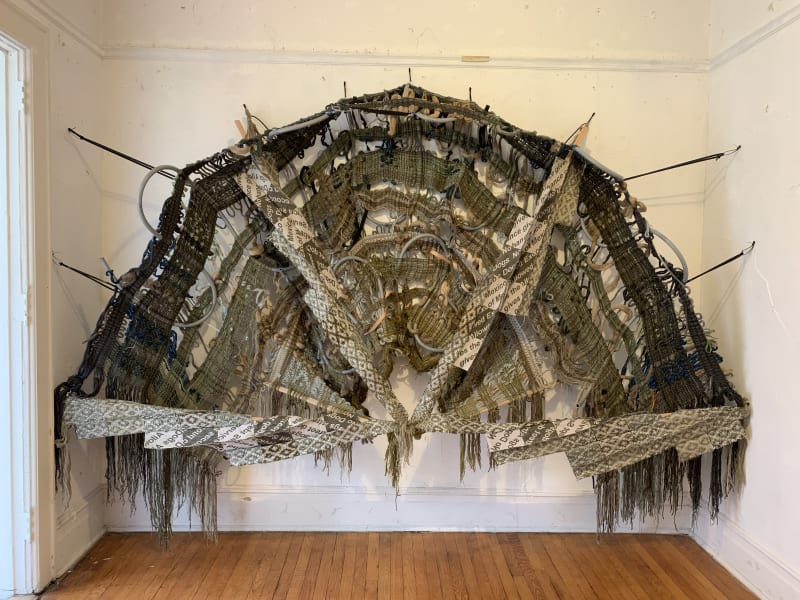I quote from one of your interview: “Weaving, as it tells, compels some material to sink to the bottom, while other material rises to the surface. Some strands act only as a support, while other strands steals the spotlight. To weave with competing unequal materials is to reflect a lived experience of ongoing U.S. colonialism supported by unequal histories. Some histories go unheard, unseen, while other histories seemingly become the whole story”.
Can we say that this concept is at the heart of your artistic research?
Absolutely! I arrived at this thesis after beginning an ongoing study and re-weaving of commissioned-by-the-Department of the Interior (U.S. federal government), Navajo-woven U.S. flags during the centennial (1876) and bicentennial (1976).
How are weaving and materials a metaphor for the history of American colonialism?
Loom with Textile, titled by the Smithsonian, is a work woven most likely between 1864-1874 by Navajo leader, Juanita (Asdzáá Tl’ógí)*. This piece has hugely influenced both my making practice, and my understanding of what weaving does and can do. My research around this textile/loom begins with the idea that while the Smithsonian labels this work an unfinished U.S. flag blanket, I question if this piece is intentionally left on the loom to show how the symbol of the flag is an ongoing construction tied to a machine, the loom, that operates to bury the nations and people with whom it comes in contact.
The image of the U.S. flag is built on top of an intersecting, colorful, and yet buried warp. Loom with Textile is an example of Navajo tapestry weaving, which is a weft-faced weave that conceals the warp. Because of this concealment, most mid-19th century Navajo weaving was done on a natural, undyed wool warp. But Juanita draws attention to what tapestry weaving hides. According to anthropologist Ann Hedlund, there are few Navajo weavings on record with a color warp, and none with a warp blocked into multiple color fields. Yet through the use of a color warp, which Juanita leaves unwoven in the middle of the textile, she is able to embed a visible counter-narrative that runs the entire length of the work.
Materializing my reading of Juanita’s piece, I wove Across (2018). This U.S. flag now weaves together two histories: my own story of (im)migration and the story of Juanita (Asdzáá Tl’ógí)’s 1874 weaving. In Across, the red and white stripes conceal the material within. Yet that covered-over material – Hawaiian and Punjabi fabrics, my hair, images of Juanita’s weaving – proliferate above, below, and within those stripes. The material which makes this U.S. flag acts to change it. Like my reading of Juanita’s piece, Across is a woven construction of refusal: materials refuse to be rendered unseen within the symbol of U.S. nation.
*To view the work Loom with Textile by Asdzáá Tl’ógí, go to the following link: https://www.si.edu/object/loom-textile:nmnhanthropology_8345504


